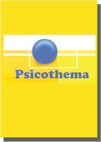Abstract
Posner' Theory of Attention: a task to measure the attentional functions of Orienting, Alerting ands Cognitive Control and the interactions between them. According to Posner 's theory of attention, we can differentiate three attentional functions, spatial orientation, alerting and cognitive control. We present a task to measure these three functions and the way they interact. Participants had to discriminate the direction of an arrow that could appear in a location either congruent or incongruent with its direction. As a measure of alerting we found people being faster on tone-present trials than on tone-absent ones. As a measure of orienting we observed better performance on valid trials vs. invalid ones. Finally, we found a congruency effect as a measure of control. Such effect was enhanced under conditions of high alerting but reduced under conditions of orienting. We discuss the results in terms of the relations between the three networks, and propose the use of such kind of measures as a diagnostic tool for specific atentional deficits in patients with cerebral damage and/or psychiatric disorders.Downloads
Download data is not yet available.
